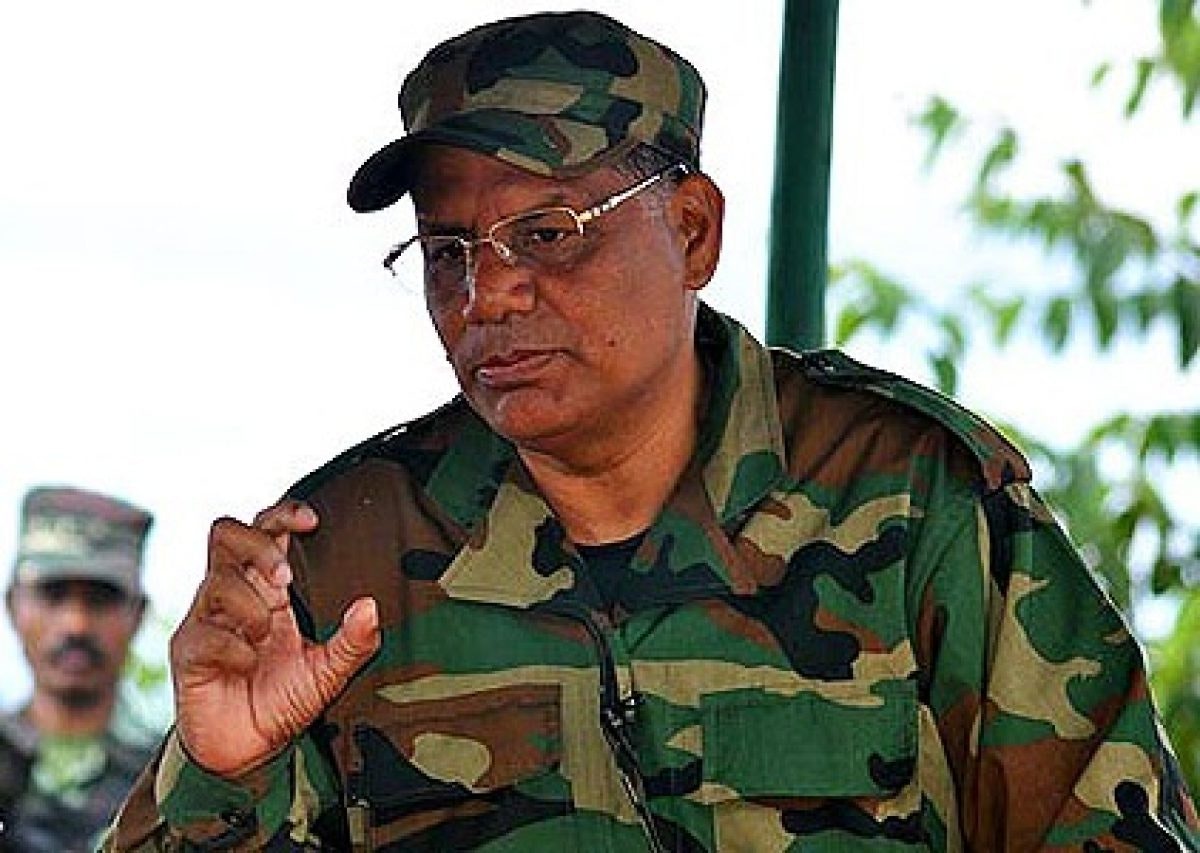
SOURCE : Asia Sentinel
China has opened a new front in regional aggressiveness, funding the separatist United Liberation Front of Assam, which has been fighting to split off the isolated northeastern Asom region from India, according to Indian intelligence sources.
Officials in New Delhi reportedly have complained to the Chinese, providing details about the actions of Paresh Barua (above), the supreme leader of the banned separatist group and demanding action as he is understood to nurture militant camps inside Myanmar from his hideout in southern China’s Yunnan province.
Commonly known as PB among his followers, the aged leader has avoided peace talks with the Union government in New Delhi despite the fact that most of his rebel colleagues have either surrendered or been eliminated. Barua can speak fluent Chinese, said GM Srivastava, a security analyst based in Guwahati, the capital of Assam state.
“He enjoys the confidence of different Chinese agencies. Without the consent of local Chinese authorities, it would have not been possible for him to stay there for many years now,” said Srivastava, the former State police chief of Tripura and Assam provinces.
Over the past decade, the Chinese government under supreme leader Xi Jinping has been steadily expanding its reach across the region, laying claim to almost the entire South China Sea including islets claimed by Vietnam, the Philippines and Malaysia and triggering two tense border incidents with India, the first in Doklam in 2017 and in Ladakh in June of this year. Beijing has clamped down on freedoms in Hong Kong and is increasingly threatening Taiwan, which it regards as a renegade province.
China has long laid claim to the disputed area of Arunachal Pradesh and other areas in Assam, a landlocked seven-province area connected to the rest of India only by a narrow neck of land that bridges over the northern border of Bangladesh.
Beijing’s Assam gambit is said to be the result of irritation over Delhi’s continued support of the Dalai Lama, the exiled Tibetan religious leader who since 1959 has found refuge in the hill town of Dharamshala, 440 km. from the Indian capital. The Tibetan settlement has grown to at least 20,000 and serves as the seat of the resistance to China’s takeover of Tibet.
Chinese secret service officers have visited some of the makeshift camps of the militant outfits inside the jungles of the Myanmar-China border, according to intelligence sources. Militants also visited China for training courses, Srivastava added, saying the elusive guerilla leader might be used by the Chinese administration to cause continuing trouble for the region, which militants often term as Western South East Asia.
An alliance of northeastern militant outfits calling themselves the United National Liberation of Western South East Asia was formed three years ago in Myanmar under the patronage of top insurgent leaders including Barua.
Most of the surviving insurgents in the region have maintained the anti-New Delhi rhetoric, although with diminishing public support. As India celebrated its 74th Independence Day on August 15, the militant groups called for a total shutdown from 6 am to 5 pm to prevent holiday activities in the region. The boycott call was forwarded by ULFA (Independent), National Socialist Council of Nagalim along with the People’s Democratic Council of Karbi Longri, the Kamatapur Liberation Organization, the Hynniewtrep National Council, the Kanglei Yawol Kanna Lup, Kangleipak Communist Party and the National Liberation Front of Twipra, insisting the commemoration was a “colonial Indian I-Day” and not meant for the freedom-loving people of the region.
Beijing, according to intelligence officials, is understood to have used Barua and his brigade in an incident three years ago in which he sent several warnings to the Dalai Lama during the Tibetan prelate’s visit to Tawang in Arunachal Pradesh not to make any anti-China statements from the soil of Assam.
China, Barua said at the time, has never been an enemy of Assam and the Han Chinese would be helpful for the indigenous people once they get separated from mainland India. He urged the Tibetan leader to help the native people of Assam assert their political freedom from New Delhi, arguing that the region had been an independent country till the Treaty of Yandabo was signed in 1826 by British colonial forces and Burmese invaders.
Criticizing anti-Beijing propaganda in the region, Barua also appealed to locals to avoid supporting the movement for a free Tibet in response to a social media campaign launched by the Tibetan freedom fighters on the occasion of Dalai Lama’s 85th birthday that slammed Beijing for long antipathy to the image of Tibet’s highest spiritual leader. The free-Tibet campaign has gained momentum in India given the recent Ladakh border conflict, in which at least 20 Indian soldiers were killed by People’s Liberation Army personnel.
With some elements of the international community accusing Beijing of mishandling the Covid-19 pandemic, which has already affected 22.5 million people, Indians have joined boycotts of Chinese goods. A number of popular Chinese technological applications including TikTok have been banned by the Indian government.
Meanwhile, Lobsang Sangay, the chief of the Central Tibetan Administration as the Tibetan government-in-exile is known, appealed to New Delhi to raise Tibetan issues with Beijing in all bilateral talks.
Amid this standoff between New Delhi and Beijing, the Barua-led militant group posted two Pro-China videos meant for Assam based media outlets. Produced in English and Assamese, the videos unilaterally blamed India for all border conflicts with China including the PLA’s aggression in 1962, three years after the Dalai Lama escaped Tibet. The narrator reminded that Assam has long had connections with China and emphasized the need for their revival.






